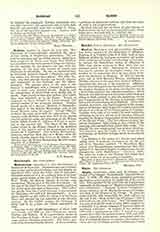

Hadrian, martyr, d. about the year 306. The Christians of Constantinople venerated the grave of this victim of Diocletian‘s persecution. We are told by legendary and unverified records, which have been preserved in Greek and Latin, that Hadrian was an officer in the body-guard of Emperor Galerius. In this capacity he was present one day with the emperor, at the trial and torture of twenty-two Christians in Nicomedia. He was so impressed that he forthwith declared himself a Christian, and with the others was thrown into prison. His wife, Natalia, who had secretly become one herself, cheered and ministered to her husband and his fellow-prisoners. The account given in the Acts of the martyrs is embellished with a number of legendary and, in part, very poetical details. Hadrian and his companions in martyrdom were finally put to death. Their members were first broken, after which they were delivered up to the flames. Natalia is supposed to have brought to Constantinople the mortal remains of her martyred husband. Another legend speaks of a martyr, Hadrian of Nicomedia, who figures in the Roman Martyrology and in the Greek Menaion under August 26. Though different in detail, the story deals with the same person. The remains of St. Hadrian were later laid in the church erected under his name and patronage on the Roman forum, which church (S. Adriano al Foro) is standing at the present day. The feast of the translation, which, in the Roman Church is the principal feast of this martyr and of his companions, is celebrated on September 8. The Roman Martyrology, however, mentions them also on March 4, while the Greek calendar places their feast on August 26. On this last date the Roman Martyrology likewise makes mention of a Hadrian.
J. P. KIRSCH

